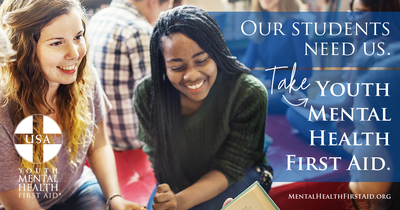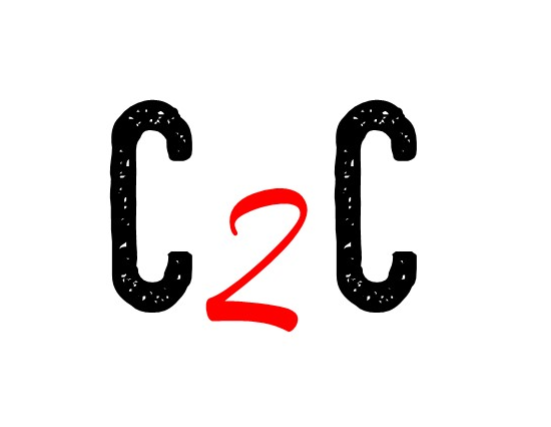C2C Training

You may know CPR and the Heimlich maneuver. You can call 911. But can you administer first aid in a mental health crisis?
It's easy to telI when someone is having a heart attack, is choking, or can't breathe. But what does depression look like? Or anxiety? What would you say to a person you know who says they are thinking about suicide? How can you help in a panic attack?
It emphasizes the importance of early intervention and covers how to help an adolescent in crisis or experiencing a mental health challenge. The youth course is intended for anyone 16 years or older to learn how to help young people.
1 in 5 teens/young adults live with a mental health condition – half develop the condition by age 14 and three-quarters by age 24. (National Alliance for Mental Illness)
1 in 5 American children ages 3 -17 have a diagnosable mental, emotional or behavioral disorder in any given year. Only 20% of these children are ever diagnosed and receive treatment; 80% aren't receiving treatment. (TODAY via Centers for Disease Control and Prevention)
Suicide is the 3rd leading cause of death in young people between the ages of 10 - 24, resulting in about 4,600 lives lost in the U.S. each year. (CBS News via Centers for Disease Control and Prevention)
64.1% of youth with major depression do not receive any mental health treatment. (Mental Health America)
About the curriculum:
Learn more about the ALGEE Action Plan
(The information below is not intended to be a substitute for the certification training that teaches participants how to use this 5 step action plan):
A - Assess for Risk of Suicide or Harm
Based on what you are seeing, determine severity of symptoms. When helping an adolescent who is going through a mental health crisis, it is important to look for signs of suicidal thoughts and behaviors, non-suicidal self-injury, or other harm.
Always seek emergency medical help if the person’s life is in immediate danger. If you have reason to believe someone may be actively suicidal, call the National Suicide Prevention Lifeline: 1-800-273-TALK (8255).
L - Listen Non-judgmentally
It may seem simple, but the ability to listen and have a meaningful conversation requires skill and patience. Maintaining an attitude of Acceptance, Genuineness, and Empathy is critical in helping a youth feel Heard, Understood, and Helped.
G - Give Reassurance and Information
Approach the conversation with respect and dignity and don’t blame the individual for his or her symptoms. Let the youth know that they are not alone, that it isn’t their fault, and that they can get better. Your goal is to reduce the stigma and shame associated with mental illness. Provide knowledge about mental illness, and indicate that it is no different than any other physical illness. Provide information and give the youth hope of recovery.
E - Encourage Appropriate Professional Help
There are many types of professionals that help individuals with mental illness, and navigating the mental healthcare system can be overwhelming. This guide is designed to simplify the process.
E - Encourage Self Help and Other Support Strategies
Individuals with mental illness can contribute to their own recovery and wellness. Involve youth in creating other options; ask what has helped in the past. Promising self-help strategies are interesting to the young person, promote a sense of satisfaction, may be social, and help with symptom management.
SCHEDULE A YMHFA TRAINING IN YOUR AREA
The UofL team is available to conduct training for specific groups. We recommend a class size of between 15 and 25 participants per training. We also require a facility in which to provide the training, with tables to accommodate the number of participants. Classes can be done in different ways to suit your agency schedules. If you know of any groups that might want to schedule a training, please contact Carol Frame at carol.frame@louisville.edu
In addition, there are a number of general training being planned over the course of the year. Watch for future announcements.

